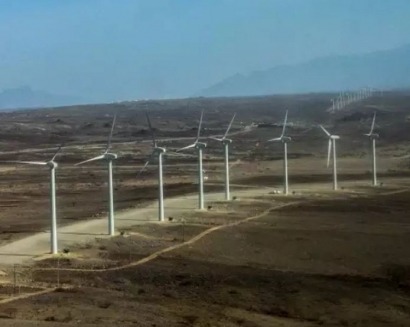
Their concerns center around the fact the Kipeto Wind Energy Project site is in close proximity to the nesting sites of two species of critically endangered vultures.
Kwenia Cliffs, Kenya’s third largest nesting site of the Rüppell’s Vulture, is located less than nine miles away. The White-Backed Vulture colony is only six. The groups believe the wind turbines could severely impact both these species, already on the verge of extinction.
The project area lies along the north-south ridge of the Rift Valley Escarpment, which is a prime location for migratory species including globally endangered Steppe Eagles as well as Amur Falcons, Eurasian Hobbys, Lesser Kestrels and White Storks.
The project would consist of 60 turbines with blades the size of passenger jet wings and a spinning velocity at the tip of 168 mph.
Kipeto Energy states they have “…undertaken comprehensive Environmental and Social Impact Assessments within the proposed project area. These reports have identified both positive and negative impacts of the project in the Kipeto area. Where the impacts are negative, KEL has formulated corresponding mitigation measures under the project's environmental and social management plan.”
They list the availability of jobs for locals; opportunities for local suppliers and artisans to provide goods and services to the project; land leases as a source of revenue and long-term income for local landowners; and the development of community programs throughout the project lifecycle to benefit education, health, environment and agriculture, as positive impacts of the project.
However, many species of large birds and bats are known to be susceptible to collision with commercial-scale wind turbines and indications are the Kipeto project will result in unsustainable mortality of highly threatened birds.
For additional information:

